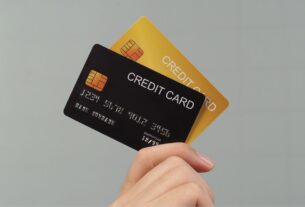Debt can be overwhelming, but with the right tools and strategies, managing and eventually eliminating debt becomes a more achievable goal. A budget planner is one of the most effective tools for this purpose. In this comprehensive guide, we will walk you through how to use a budget planner for effective debt management. Whether you’re new to budgeting or looking to refine your approach, these tips will help you get started on the path to financial freedom.
What is a Budget Planner?
A budget planner is a tool that helps you track your income and expenses, allowing you to manage your finances more effectively. It can be a physical notebook, a spreadsheet, or a dedicated app. The main purpose of a budget planner is to provide a clear picture of your financial situation, helping you make informed decisions about your spending and saving habits.
Benefits of Using a Budget Planner
Using a budget planner offers numerous benefits:
- Clear Financial Overview: A budget planner provides a detailed overview of your income, expenses, and debt, making it easier to understand your financial situation.
- Spending Control: By tracking your expenses, you can identify areas where you might be overspending and make necessary adjustments.
- Debt Reduction: With a clear plan, you can allocate more funds towards paying off debt.
- Savings Goals: A budget planner helps you set and achieve savings goals, whether for an emergency fund, a vacation, or retirement.
- Stress Reduction: Knowing exactly where your money is going reduces financial stress and helps you feel more in control.
Steps to Using a Budget Planner for Debt Management
1. Gather Your Financial Information
The first step in using a budget planner is to gather all your financial information. This includes:
- Income: List all sources of income, including your salary, side jobs, and any other income streams.
- Expenses: Gather information on all your monthly expenses, such as rent/mortgage, utilities, groceries, transportation, insurance, and entertainment.
- Debts: List all your debts, including credit card balances, student loans, car loans, and any other liabilities. Make a note of the due dates, minimum payments, and interest rates.
2. Choose the Right Budget Planner
Select a budget planner that suits your needs and preferences. Here are some options:
- Physical Planner: A traditional notebook or binder with sections for income, expenses, and debts. This is ideal if you prefer writing things down.
- Spreadsheet: A digital spreadsheet (e.g., Microsoft Excel, Google Sheets) that allows for easy customization and calculations.
- Budgeting Apps: Apps like Mint, YNAB (You Need a Budget), and EveryDollar offer user-friendly interfaces and features for tracking finances on the go.
3. Set Up Your Budget
Start by setting up your budget in your chosen planner. Here’s how:
- Income: List all your income sources and their amounts.
- Fixed Expenses: Record your fixed expenses, such as rent/mortgage, utilities, and insurance. These are monthly expenses that remain constant.
- Variable Expenses: List your variable expenses, like groceries, entertainment, and dining out. These can fluctuate each month.
- Debt Payments: Record all your debt payments, including minimum payments and any extra payments you plan to make.
4. Track Your Spending
To manage debt effectively, it’s crucial to track your spending meticulously. Record every expense, no matter how small, in your budget planner. This makes it easier for you to spot expenditure trends and places where you might make savings. Many budgeting apps can automatically categorize expenses for you, making this process easier.
5. Create a Debt Repayment Plan
With a clear view of your finances, you can create a debt repayment plan. Here are two popular strategies:
- Debt Snowball Method: While making the minimal payments on other obligations, concentrate on paying off the smallest bill first. Proceed to the next smallest obligation when the smallest has been settled, and so forth. This approach offers inspiration and rapid results.
- Debt Avalanche Method: Prioritize paying off the loan with the highest interest rate and make only the bare minimum payments on all other obligations. Over time, using this strategy will save you more money on interest.
Select the approach that best fits your psychological preferences and budgetary circumstances.
6. Adjust Your Budget
As you track your spending and debt repayment progress, you may need to adjust your budget. Look for areas where you can cut back on spending and allocate those funds towards debt repayment. This might involve reducing discretionary expenses like dining out, entertainment, or shopping.
7. Build an Emergency Fund
Building an emergency fund is just as crucial as paying off debt. Aim to save at least $1,000 initially, then gradually build it up to cover 3-6 months of living expenses. An emergency fund provides a financial cushion, preventing you from taking on more debt in case of unexpected expenses.
8. Monitor Your Progress
Regularly review your budget and debt repayment progress. You can stay on course and make the required corrections thanks to this. To stay inspired, recognize and appreciate your accomplishments, no matter how tiny.
Also Read: The Best Online Business Opportunities for Beginners in 2024
Tips for Effective Debt Management
- Automate Payments: To make sure you never forget a payment, set up recurring withdrawals from your accounts.
- Negotiate Lower Interest Rates: Contact your creditors to negotiate lower interest rates or consider transferring balances to a lower-interest credit card.
- Increase Income: Look for ways to increase your income, such as freelancing, part-time work, or selling unused items.
- Avoid New Debt: Resist the temptation to take on new debt while you’re focused on paying off existing debts.
- Seek Professional Help: If you’re struggling with debt management, consider seeking help from a credit counseling agency or financial advisor.
Bottom Line
Using a budget planner for effective debt management is a powerful strategy to regain control of your finances and work towards financial freedom. By gathering your financial information, choosing the right planner, setting up your budget, and tracking your spending, you can create a clear path to debt repayment. Adjust your budget as needed, build an emergency fund, and monitor your progress regularly. With determination and discipline, you can successfully manage and eliminate your debt, paving the way for a more secure financial future.




